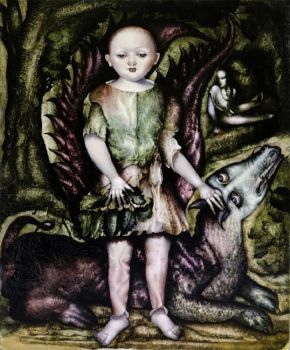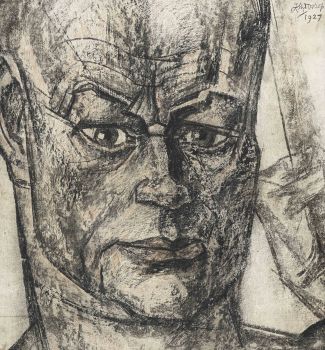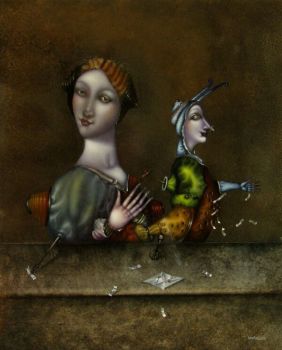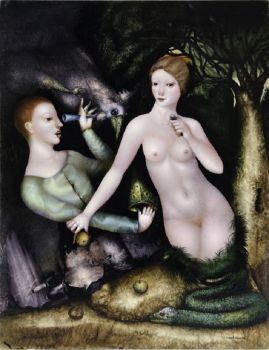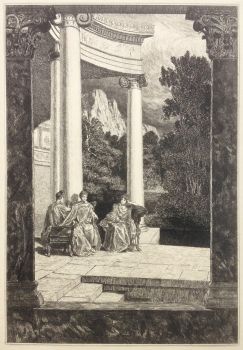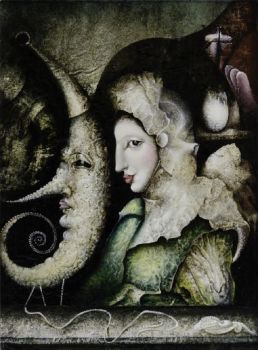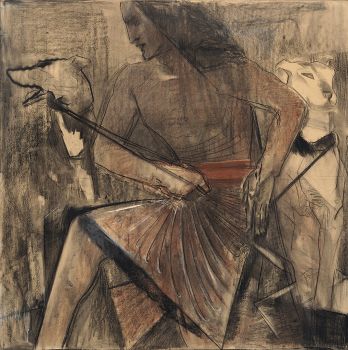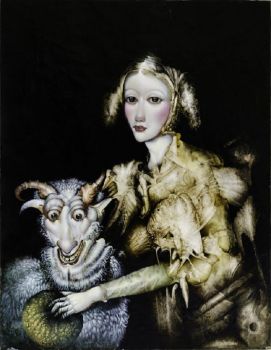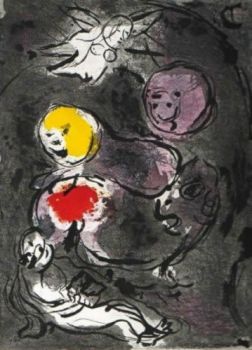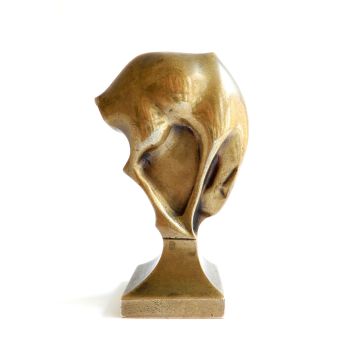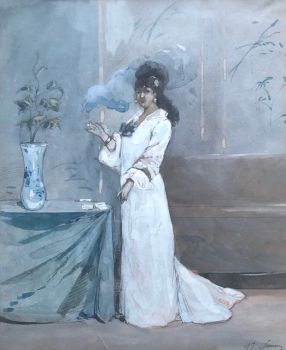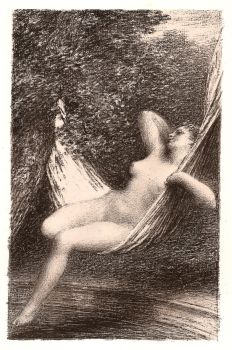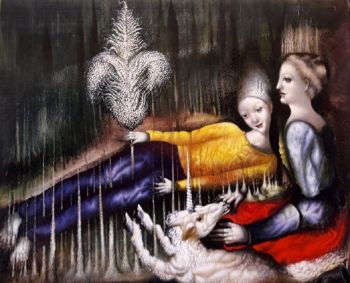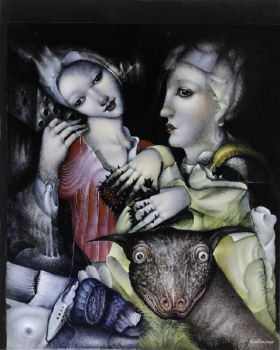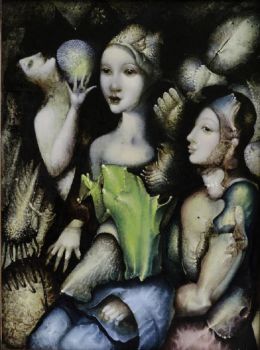Symbolism also emphasized the use of unconventional techniques and materials, with many artists experimenting with non-traditional forms of media such as charcoal, pastels, and watercolors. This allowed for a greater range of expression and experimentation, which further contributed to the mystical and dreamlike qualities of Symbolist art.
Another significant contribution of Symbolism to art was its focus on the inner life of the individual. Symbolist artists sought to express the innermost thoughts and emotions of their subjects, often through highly personal and subjective forms of expression. This is seen in the use of intense colors, distorted figures, and abstract forms, which conveyed a sense of the subject's inner life and personal experiences.
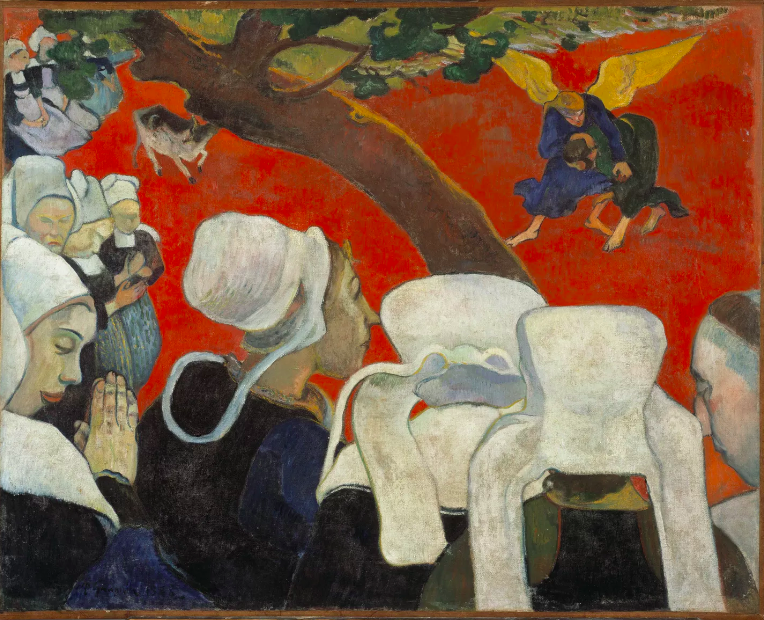 Vision after the Sermon (Jacob Wrestling with the Angel), 1888 "Mystical Landscapes: Masterpieces from Monet, Van Gogh & More" at Art Gallery of Ontario (2016-2017)
Vision after the Sermon (Jacob Wrestling with the Angel), 1888 "Mystical Landscapes: Masterpieces from Monet, Van Gogh & More" at Art Gallery of Ontario (2016-2017)
Symbolism also played a significant role in the development of new artistic genres and styles. It paved the way for the development of Surrealism, with its emphasis on the irrational and the subconscious. Additionally, Symbolist art influenced the development of Expressionism, a more emotional and subjective approach to art that emerged in the early 20th century.
In conclusion, the Symbolism movement of art played a crucial role in the development of art and had a profound impact on the artistic world. Its emphasis on symbolic imagery, unconventional techniques, inner experience, and the mystical challenged the prevailing artistic and social conventions of its time, paving the way for new artistic movements and styles to emerge. Symbolist art remains an important and influential style in art today, and its legacy can be seen in some of the most captivating and expressive works of modern art.
* Image in the header is a painting from Ferdinand Hodler 'The Disappointed Souls (Les âmes déçues)', 1892, Guggenheim Museum


 Vision after the Sermon (Jacob Wrestling with the Angel), 1888 "Mystical Landscapes: Masterpieces from Monet, Van Gogh & More" at Art Gallery of Ontario (2016-2017)
Vision after the Sermon (Jacob Wrestling with the Angel), 1888 "Mystical Landscapes: Masterpieces from Monet, Van Gogh & More" at Art Gallery of Ontario (2016-2017)